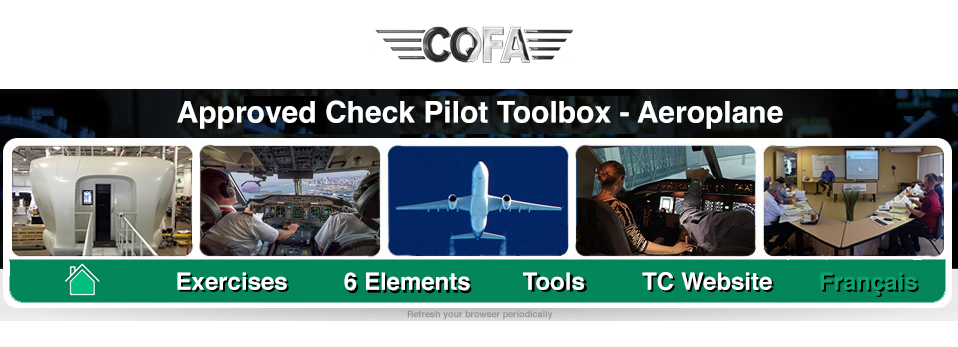11. Steep turns
Aim
Determine the candidate’s ability to perform level and coordinated steep turns.
Description
At an operationally safe altitude recommended by the manufacturer, training syllabus, or other training directive, but in no case lower than 3,000 feet AGL, the candidate will execute at least one steep turn in each direction with a bank angle of 45° and a change in heading of at least 180° but not more than 360°. The candidate will specify the selected altitude, airspeed and initial heading before entering the turn.
For 704 and 705 PPC’s conducted in a simulator, ACP need not evaluate steep turns are when the PPC follows either a LOFT scenario, a scripted PPC or is for a fly-by wire aeroplane; and
- for an initial PPC on aeroplane type, steep turns were satisfactorily demonstrated during initial training;
- for semi-annual or an annual PPC:
- steep turns that are part of the applicable annual training syllabus were satisfactorily demonstrated during this training; or
- steep turns are not part of the applicable annual training syllabus.
Performance Criteria
(06/2017 FTG p.27)
- where applicable, divide attention appropriately between outside visual references and instrument indications;
- roll into and out of turns, using smooth and coordinated pitch, bank and power control to maintain the specified altitude within ±100 feet and the desired airspeed within ±10 knots;
- establish the recommended entry airspeed;
- maintain the bank angle of 45° within ±10° while in smooth stabilized flight;
- after 180° of turn, roll out of the turn at approximately the same rate used to roll into the turn and reverse the direction of turn and repeat the manoeuvre in the opposite direction;
- roll out of the turn at the reversal heading and the entry heading within ±10°; and
- avoid any indication of an approaching stall, abnormal flight attitude, or exceeding any structural or operating limitation during any part of the manoeuvre.
Commenting a "1"
- Steep turns executed without outside surveillance before and during the turns.
- Unable to maintain 45° roll angle. Constant flight control input and large angle variations observed.
- Unable to maintain altitude +/- 100 feet during the turn.
- Unable to roll out on desired heading resulting in reverse correction roll.
- Stall warnings activated, and not responded to with SOP calls or corrective actions.
Commenting a "2"
- Steep turns executed with very little outside surveillance.
- Constant flight control input to maintain roll between 35° and 55° resulting in frequent speed and altitude variations.
- Major altitude variations observed requiring constant flight control input. Corrected with the support of other crewmember.
- Unable to consistently roll out on desired heading, but corrected promptly thereafter.
- Inadequate power management leads to speed and pitch deviations that were dealt with promptly as per SOP.
